Innovations in Drone Detection, Skeletal Modeling and Vertical Flight Highlighted at Embry-Riddle’s Annual Research Showcase
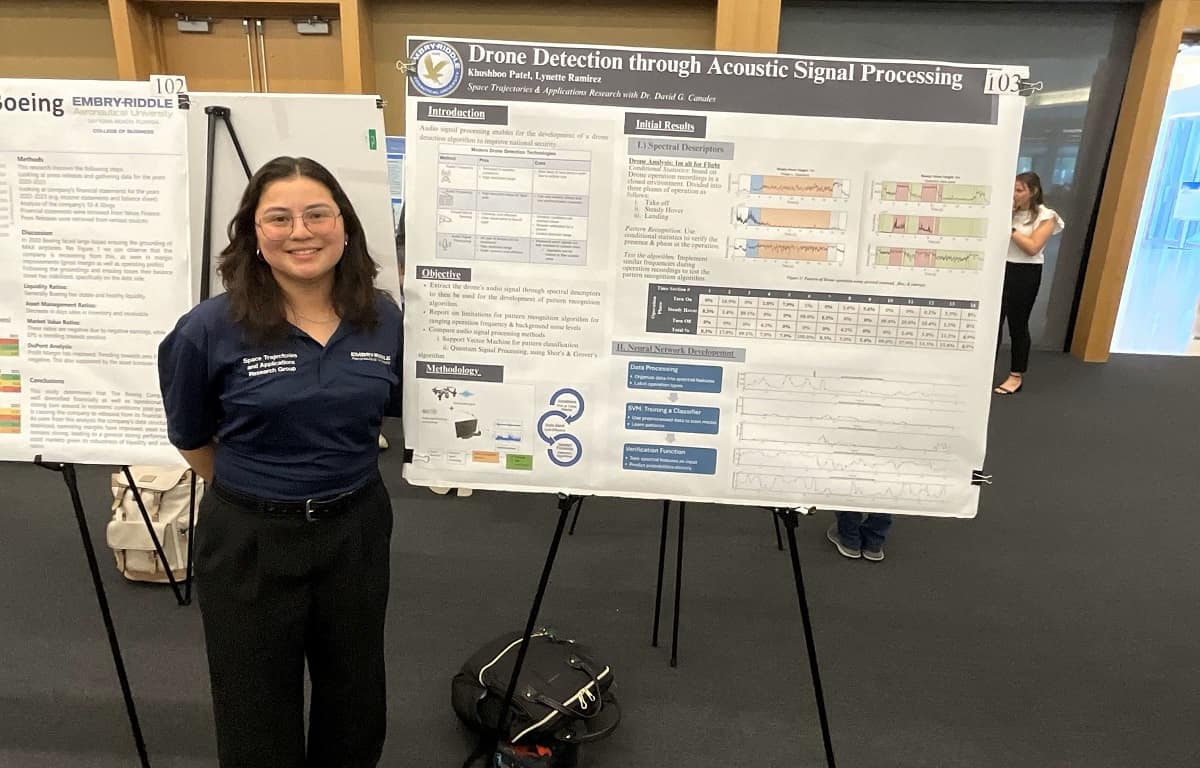
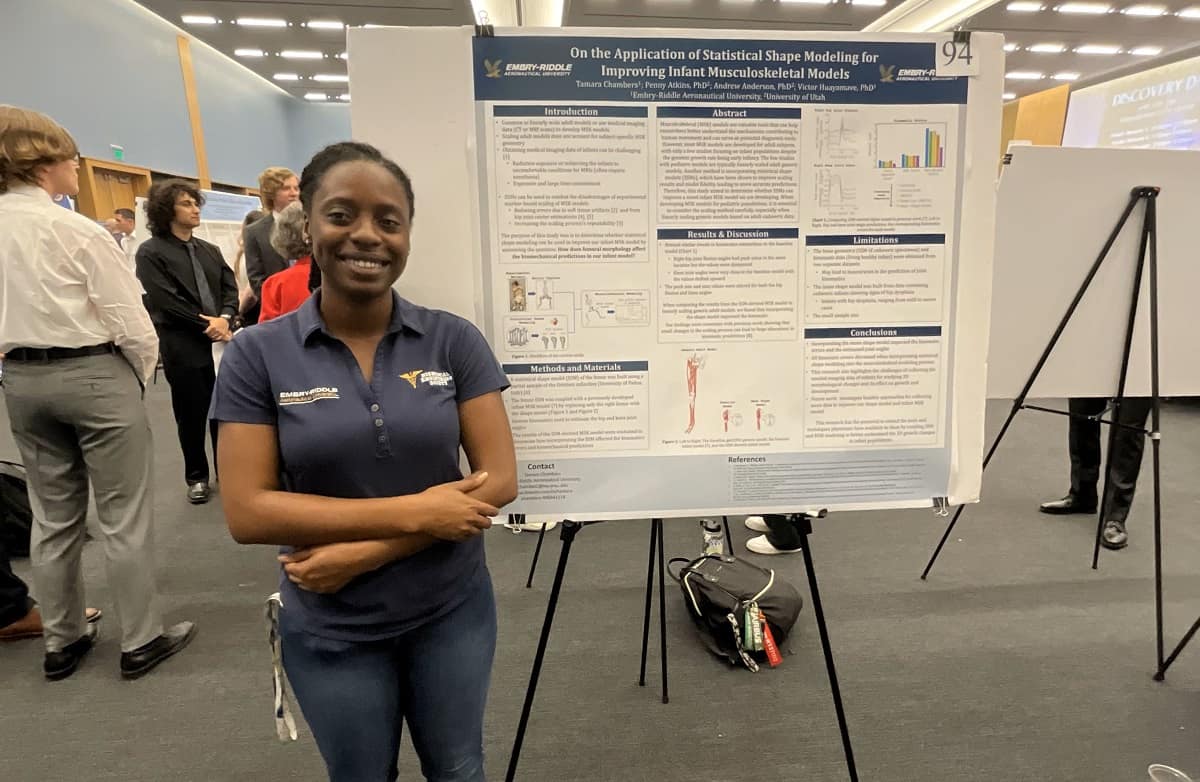
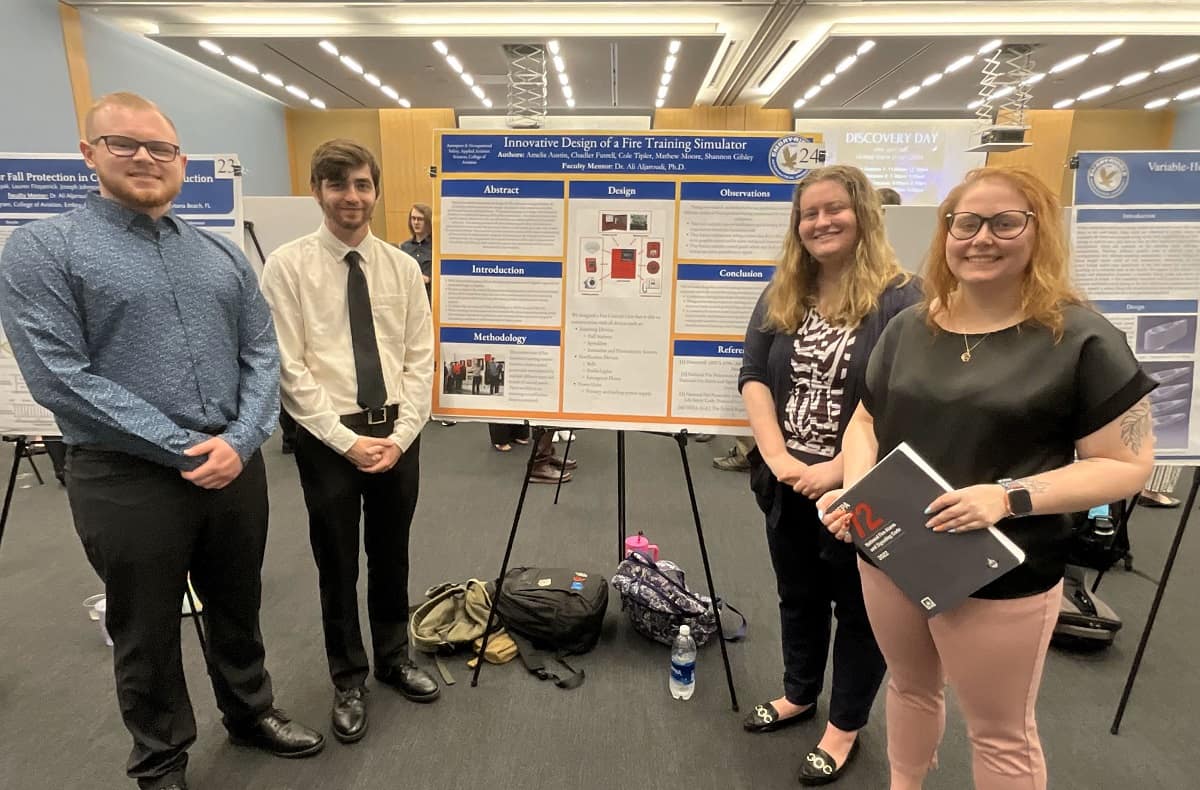
Nearly 200 research projects were presented this month by students at research symposiums hosted annually at Embry-Riddle Aeronautical University.
“Discovery Day is our pinnacle event,” said Dr. Ronnie Mack, director of Embry‑Riddle’s Office of Undergraduate Research. On the Daytona Beach, Florida, campus, “our biggest goal is to make this a community event to celebrate research together.”
On the Prescott, Arizona, campus, the Undergraduate Research Institute (URI) hosted the university’s second research conference of April.
“It has been an exciting year for our Embry-Riddle undergraduates, as is reflected in the breadth and depth of the presentations included in our Discovery Day events,” said Dr. Anne Boettcher, assistant dean of research for the URI. “I am repeatedly impressed with the insight, dedication and determination of our students.”
Daytona Beach Campus Projects
At the Daytona Beach Campus, the Discovery Day Student Research Symposium featured a record number of 116 posters presented in two sessions to students, faculty and staff. Worldwide Campus students also made virtual research presentations.
One standout project was presented by Lynette Ramirez, who will be graduating next month with her Bachelor of Science in Aerospace Engineering. Ramirez was chosen as one of two top undergraduates awarded for her work exploring how acoustics and quantum signal processing can be used to detect uncrewed aerial vehicles (UAVs) in secured air space. She partnered on the research with Khushboo Patel, a Ph.D. Aerospace Engineering student and research assistant at the Space Trajectories and Applications Research Group, which is directed by Dr. David Canales Garcia, assistant professor of Aerospace Engineering.
“In an era where UAVs are becoming increasingly prevalent, ensuring safety in our airspace has never been more critical,” said Ramirez. “Among the myriad detection methods available, acoustic UAV detection emerges as a paramount solution, offering unique benefits that significantly bolster safety and security measures.”
In addition to Ramirez, Aerospace and Occupational Safety students Cole Tipler, Matthew Moore, Shannon Gibley, Chandler Futrell and Amelia Austin won first place for their design of a fire-inspection simulator. The research was conducted alongside faculty advisor Dr. Ali Aljaroudi, assistant professor and program coordinator.
“Because fire safety systems, like fire alarms, are a more proactive approach to safety, it often leads to inspectors and safety professionals becoming complacent,” said Austin. “This complacency is what drove us to research and promote a new fire alarm inspection simulator that reduces and eliminates workplace complacency while keeping inspectors and safety professionals up to date on the most used fire alarm systems.”
Tamara Chambers, a Mechanical Engineering Ph.D. student, was chosen as the top graduate student for her research on how statistical shape modeling can improve novel infant musculoskeletal models currently in development. A triple-alumna, Chambers also earned her bachelor’s degree and master’s degree in Mechanical Engineering from Embry-Riddle.
Additionally, Trevor Simoneau, a graduate research assistant at the Boeing Center for Aviation and Aerospace Safety who is pursuing a master’s in Aviation, was chosen as Student Researcher of the Year. Dr. Bryan Watson, assistant professor and director of the university’s Biologically Inspired Design-for-Resilience (BID4R) Lab, was selected as Faculty Mentor of the Year.
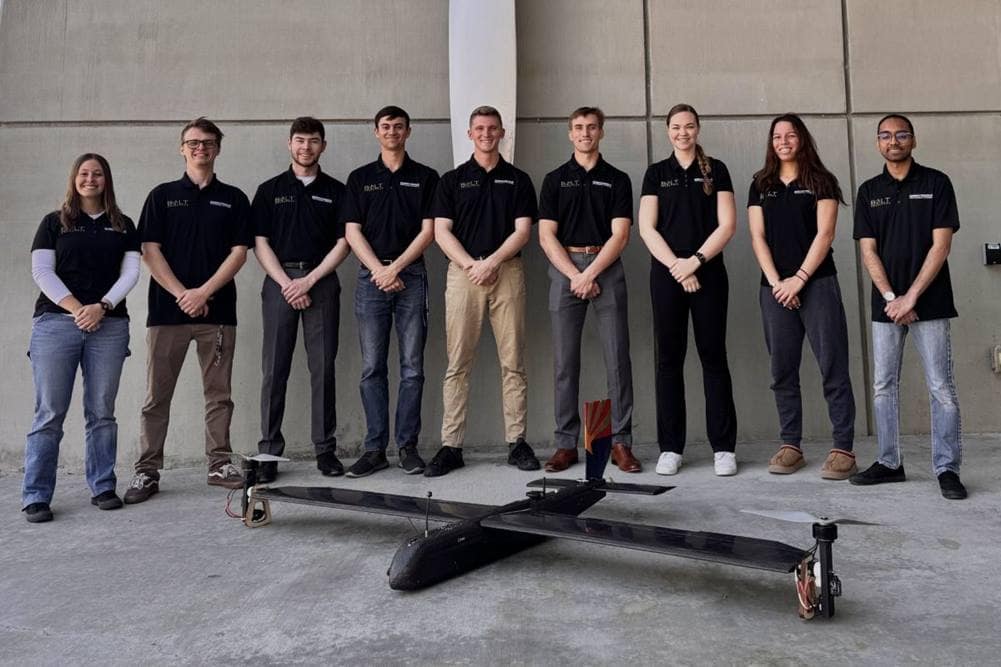
Embry-Riddle Prescott’s BOLT Aerospace team stands with their Design-Build-Vertical-Flight project, CARLOS (Craft for Aerial Relocation of Light Objects and Supplies). (Photo: Embry‑Riddle/Hunter Nudson)
Prescott Campus Projects
The innovative research highlighted at the annual URI event on the Prescott Campus showcased the next generation of aerospace, engineering, business, science and security leaders.
Forensic Psychology student Narayt Salcido explored research titled “Addressing the Cold Case Crisis Among Arizona Tribes” to research the disproportionately high number of unsolved violent crimes impacting Arizona’s Native American communities. Mentored by Dr. Diana Orem and professor Kelly Crockett, Salcido’s research focuses on factors contributing to the crisis, influenced by historical trauma and past government shortcomings.
"A crucial aspect of understanding the Native American Cold Case Crisis includes understanding the point of view of tribes,” said Salcido. “Incorporating tribal perspectives and empirical data to create recommendations, we hope to establish a relationship of trust between local Arizona tribes, Embry-Riddle Aeronautical University and criminal investigators."
Together with faculty mentors Dr. Johann Dorfling and Dr. Richard Mangum, a team of Aerospace Engineering students, known as BOLT (Battery Operated Light Transport) Aerospace, has prepared to compete in the prestigious Vertical Flight Society’s Design-Build-Vertical-Flight Competition in April. This national competition pushes the boundaries of unmanned aerial vehicle (UAV) technology, challenging students to design, build and fly electric Vertical Takeoff and landing (eVTOL) aircraft.
BOLT Aerospace’s design, named CARLOS (Craft for Aerial Relocation of Light Objects and Supplies), consists of two phases: one piloted and one autonomous. In both phases, the team’s eVTOL aircraft will be tasked with taking off vertically, traveling through a course and landing vertically.
"Working on CARLOS this past year has been a great experience with over 4,000 hours of hands-on analysis, design, fabrication and testing,” said team member Hunter Nudson. “This project has thoroughly expanded our engineering skills and has prepared us for our future."
Aided by NASA funding and a partnership with the Nationwide Eclipse Ballooning Project (NEBP), another team of student researchers designed a weather balloon and payload system named SinyeLLA to gather valuable data during the total solar eclipse that occurred on April 8. SinyeLLA will use a high-altitude balloon equipped with advanced sensors and cameras to capture insights into the impact of eclipses on the Earth’s atmosphere. With faculty mentors Dr. Kathryn Wesson, Dr. Yabin Liao and Dr. Seth McNeill, the project integrates elements of applied aviation science, aerospace engineering and computer, electrical and software engineering disciplines.
“Working with the NEBP and NASA was extraordinary,” said Mechanical Engineering student and researcher Mackenzie Shughart. “Being able to travel to Texas to test my payload with others and seeing it produce high-definition images of the eclipse, including infrared, was truly remarkable.”
Many of the projects presented during each Discovery Day event were funded by Embry-Riddle Philanthropy Councils, Ignite, internal grants, the Arizona Space Grant program and other institutional sources.
*Keaton S. Ziem contributed to this report.
Posted In: Applied Science | Aviation | Engineering | Research

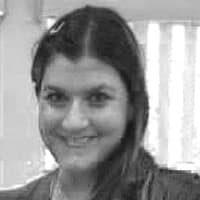 Melanie Azam
Melanie Azam